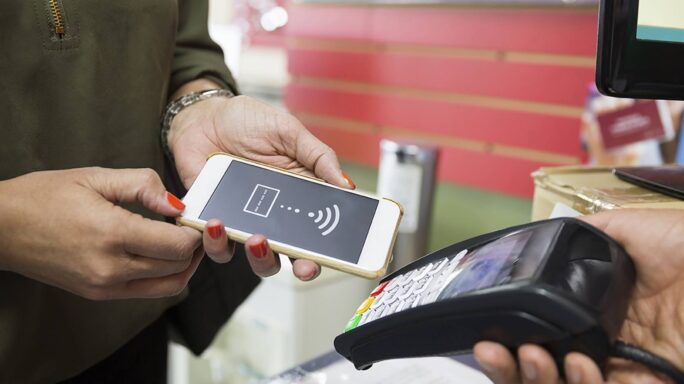Money Matters
How to improve the customer experience with fintech

Want to improve the customer experience for your consumers? A great way to do that is with how your business accepts payments. Using fintech can keep you one step ahead of your competition and leave you with happy customers.
This article talks about how fintech can benefit your company and enhance the customer experience at the same time.
As the payments industry transforms from an exchange to an experience, the options to accept payments are growing beyond imagination. Fintech such as digital payments (mobile, peer-to-peer and digital commerce) is challenging the efficiency of traditional payments and banking. And judging from the global adoption rate among customers, fintech is winning.
Take in-store mobile payments such as PayPal or Android Pay, for example. China, the US and the UK are the leading markets for mobile point-of-sale (mPOS) transactional value at €179,507, €111,338, and €20,942 million this year, respectively.
There’s a clear customer demand for this method with 12.4 million UK mobile POS users this year, up from 10.3 million last year. For online shoppers, research shows globally that 39% prefer to pay with a mobile wallet than any other method.
Aside from meeting customer expectations and offering a preferred payment method, what are the benefits of implementing fintech in-store or online? Are there any concerns with new technology you should know about? What should you look for in today’s payments service provider?
The perfect personal customer experience
Today’s retail and hospitality industries are customer experience-driven but implementing payments technology doesn’t have to be done on a grand scale to be effective.
A seamless payment process is expected but a bad one can be damaging to your business reputation. An impressive one can convert an otherwise unenthused customer into a loyal brand ambassador.
Mike Hinojosa, senior director of product management at tech company Agilysys, explained how this works in the hospitality sector. “Hotels can spend millions of dollars on a remodel but if they don’t have the right point of experience, it can still result in a one- or two-star rating,” he said.
One of the popular ways to elevate experience through payments is to implement mobile technology such as mobile point-of-sale (mPOS). “Of all the POS technology, mobile is the most accessible, real and not futuristic. Mobile is now,” Mike said.
Mobile phone penetration in the UK has now eclipsed that of laptops with 85% of adults owning one. Meanwhile, 91% of UK consumers use their mobiles at least once a day and are comfortable using their smartphones for tasks such as shopping (52%) and social media (49%).
If you can align and integrate your payments process with their everyday mobile habits, you create a personal experience for your customer to rave about on their social networks.
Mobile POS also empowers your staff to create an optimal personal experience if you have a mobile card reader and can serve/assist customers one on one.
“Your staff are now your brand ambassadors — they are the face of the property and can give the best personal experience for those guests they are quickly serving,” Mike added. Bottom line: in 2018, businesses that invest in customer experience win the customers.

Using fintech can help speed things up for your customers
Speed up wait times
Much like the assumed smooth payments process, customers are more vocal about slow wait times than they are when things go as expected. Investing in fintech means tending to your customers faster and more efficiently.
In fact, UK shoppers say unavailable or distracted cashiers and an inefficient or inaccurate checkout process are the first two of the top three complaints about shopping in-store.
Amazon’s US cashier-less store is an example of big-scale retail technology appealing to today’s customer. The customer experience titan has introduced an unforeseen level of convenience by replacing the traditional checkout process with…well nothing.
Instead, shoppers simply walk out of the store with their goods and their stored Amazon payment method is charged once they leave.
A more conventional method for your medium-sized business could be to add an online checkout option.
Terry Lundgren, executive chairman at Macy’s, advises that omni-channel retail, the term used for how retailers connect the online and offline experience, should be high-priority for every business looking to appeal to a dynamic customer base.
“Physical stores are not going away. Customers will always want the option of coming into the store to try on jeans instead of buying three different sizes online,” he said.
If customers can pay for their items online and pick them up in-store, you can have a separate checkout process for them with designated staff to assist them.
Customer data and inventory management
Today’s POS technology and software has valuable back office benefits as well. Personalised data makes it easier to manage inventory in real-time as customers make purchases. You could use that data when analysing costs.
Trends in customer purchases could prompt you to bulk up on some stock items more than others. You could also use collected customer data to create campaigns and sales to attract returning customers and influence customer loyalty.
What to look for in fintech technology
If you’re ready to implement and are looking for the right fit, here are some key components to prioritise:
Ease of use
How easy will it be to train your staff? All the bells and whistles don’t mean much if your staff doesn’t understand how to use them.
Familiar payment options
Your payment system should include options that your customers are familiar with. While many customers are comfortable with mobile wallets, making that the only option for payment will isolate your other customers who aren’t as comfortable.
Tokenisation
The technology that makes one-click online shopping possible. It creates a token for new transactions, protecting sensitive data by replacing it with an algorithmically generated number. This system also allows your customers to register their card on your website.
Security authentication
Integrating new technologies into a company’s core operations always introduces new complexity and potential avenues that attackers could exploit.
Understanding your new data environment (how its created, stored and shared) and the regulatory implications will help you understand your risks and how to minimise them.
Are you looking to modernise your processes and the way you accept payments? Tell us how in the comments below.
Improve your retail payment solutions
Want to improve your company's payment processes and improve your customer experience offerings? Use these free guides to get the insights that will help you achieve your goals.







Ask the author a question or share your advice